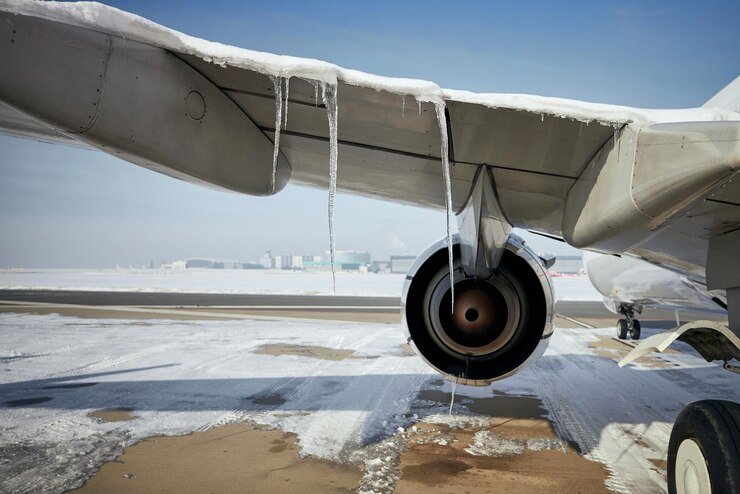One of the most important but also sometimes disregarded parts in keeping aircraft safety and performance is the hydraulic fluid utilized in the aircraft systems. Powering flight control systems, landing gear, brakes, and more depend on these fluids. Although there are several varieties of hydraulic fluids, each has a distinct use, so selecting the appropriate one is essential for the aircraft’s flawless running.
5606 Hydraulic Fluid
Mill H 5606 hydraulic fluid is among the most often used hydraulic fluids in aviation. Because of its proven dependability and effectiveness in many situations, this fluid is extensively used in commercial and military aircraft. Often a mineral-based fluid with great performance under both high and low temperatures, 5606 hydraulic fluid is known for its adaptability and best fit for usage in a variety of aircraft, from little general aviation planes to huge commercial airliners.
The capacity of 5606 hydraulic fluid to retain its fluidity in severe temperatures is its fundamental characteristic; this is very vital for airplane operations at several altitudes and climates. Apart from its thermal stability, this fluid has extraordinary corrosion and rust prevention qualities. It offers necessary lubrication for hydraulic system moving components, therefore reducing wear and tear that may otherwise cause system problems.
Skydrol
If you work in aviation, Skydrol is probably a recognizable name. Designed especially for use in high-performance aircraft, including commercial airliners and military jets, Skydrol is a phosphate ester-based hydraulic fluid. Skydrol’s fire-resistant qualities are one of the main factors behind its fluidity of choice for these kinds of aircraft. Skydrol differs from conventional hydraulic fluids in that it does not burn as readily. This is a crucial safety precaution, particularly in high-pressure and high-temperature surroundings, including those of aviation systems.
Additionally providing outstanding performance in harsh temperature circumstances and high-altitude activities is Skydrol. This fluid is intended to give hydraulic components ideal lubrication and protection, therefore extending the lifetime of important systems. Skydrol has a strong chemical character, which is one of its drawbacks, though. Certain materials, like rubber and some metals, might be corrosive; thus, careful thought should be done when choosing hydraulic system components.
MIL-H-83282
Essential in the military and defense industries, the MIL-H-83282 is a hydraulic fluid of military grade. Usually utilized in military airplanes and other high-performance military equipment, this fluid’s exceptional resilience to heat deterioration and capacity to operate in very high-pressure conditions help explain why. Being synthetic, MIL-H-83282 provides improved performance qualities over conventional mineral-based fluids such as 5606.
MIL-H-83282 is unique in that it can run efficiently in both low and high temperatures, which makes it perfect for military aircraft flying over a broad spectrum from frigid regions to desert heat. Furthermore, the fluid can keep its viscosity even under great stress and is rather resistant to foaming. This makes it ideal for demanding uses like fighter planes or helicopters where fluid dependability is non-negotiable.
HyJet
Originally employed mostly in commercial aircraft, HyJet is a high-performance hydraulic fluid with outstanding stability, corrosion resistance, and high-temperature performance. Designed especially for airplanes flying at high altitudes and under varied operating circumstances, this type of phosphate ester-based fluid is a High flash point Hy. Jet is well-known for providing extra security should system leaks or malfunctions occur during flight.
Apart from its fire-resistant qualities, HyJet shines in reducing component wear and tear, therefore guaranteeing seamless hydraulic operations across several systems—including the brakes, landing gear, and flight controls. Given the effect of moisture and air conditions on hydraulic components over time, the fluid also offers great protection against corrosion—a crucial ability.
Phosphate Ester Fluids
Because of their outstanding fire-resistant qualities, which make them a preferred choice for aircraft running in harsh environments, phosphate ester-based hydraulic fluids such as Skydrol and HyJet are commonly recommended. These synthetic fluids are designed to resist high temperatures and, hence, lower the danger of fire or explosion should the hydraulic system break down. Military and commercial aircraft that must satisfy strict safety criteria find the perfect fit in phosphate ester fluids.
Reliable for long-term operation in the hydraulic systems of the aircraft, these fluids provide a great degree of lubrication and corrosion resistance. Furthermore showing great resilience in both high and low-temperature situations, they provide ideal fluid flow independent of outside circumstances.
Conclusion
Maintaining the safety, dependability, and performance of an aircraft depends on selecting the proper hydraulic fluid in the realm of aviation. Every kind of hydraulic fluid has benefits; the ideal one will rely on the particular requirements of the aircraft in issue. Choosing the right fluid and guaranteeing correct maintenance procedures can assist in guaranteeing that the hydraulic systems of your aircraft run as they should, thereby lowering the danger of failure and so promoting general flight safety.
